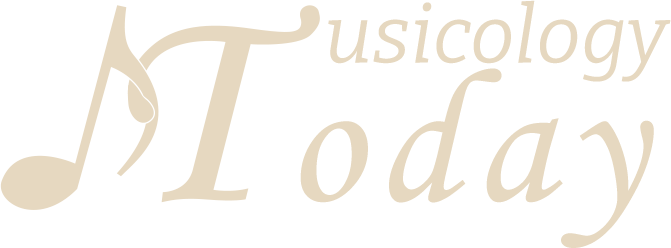Instructions to Authors
1. General aspects
- Authors will submit original works that have not been previously published.
- Musicology Today publishes these works as Open Access articles distributed under the terms of the Creative Commons Attribution Non-Commercial License (http://creativecommons.org/licenses/by-nc/4.0/), which permits non-commercial re-use, distribution, and reproduction in any medium, provided the original work is properly cited.
- All works must be sent in electronic format to musicologytoday@unmb.ro
- The work must be written in English, German, or French. You may use either British English or American English.
- Files will be saved in one of the following formats: .doc, .docx or odt. Please also send a pdf version.
- The maximum length of the article is 40 pages (that is, 80,000 characters or 12,000 words), for the Studies section; 20 pages, for the Thoughts section; and 6 pages, for the Book reviews section. The list of references is not counted in terms of the article’s length.
- If the text is structured in chapters that bear a title, these will be written as follows: titles of chapters – BOLD SMALL CAPS; titles of sub-chapters – Regular Bold.
- Please use Times New Roman font, font size 12 (10 for the footnotes and legends), justified (aligned to both left and right). New paragraph should be indented except below headings, tables and block quotations.
- Double quotation marks (“ ”) ought to be used for quoted material within a text, while single quotation marks (‘ ’) should be used for quotes within quotes (e.g. Chrysanthos writes that “Petros learned the power of the cheironomia . . . and he was saying: ‘If I only knew that there exists an expert of the cheironomia even in America, I would go’”.). Papers written in German or French will use the quotation marks accordingly: „ “ for German; « » for French.
- Use italics for titles of works and for foreign words, e.g. Chrysanthos mentions cheironomia in his Great Theory of Music; Mussorgsky composed Pictures at an Exhibition. If the piece doesn’t bear a special title, its name will be written in roman: Sonata No. 6, Op. 62; Five Preludes, Op. 74.
- Titles in other languages than English, French or German will be accompanied by their English translation in brackets (e.g.: La piață [At the Marketplace]), both in the main text and in the references.
- Expanded quotation will be marked by paragraphs edited in a different manner: font size 11, with left and right narrowed text block, without quotation marks. Please do not use text-boxes.
- Musical notes will be written in capital letters in English or German: C, D etc. (in French, in small letters: do, ré etc.). Accidentals will be put as symbols and after the note: B♭ – C – D – F♯ (not B flat, F sharp).
- Please send the illustrations as separate files in .tif or .jpg format. Provide a legend for every table, figure or musical example (e.g. Fig. 2. Octatonic scale, three transpositions. Ex. 1. First page of Oedip by George Enescu (mm. 1-24). Table 2. Structure of the third movement.).
- Please indicate in the word document the place in which you would prefer the illustrations to appear. Please mark it in red in the word document (e.g. Fig. 1).
- As the journal is also published in black-and-white printed form, the authors are kindly asked to avoid illustrations that need to be printed in color.
- The author is responsible for obtaining the permission necessary to reproduce an image or score, to quote from other works, to reproduce material already published and to reprint from other publications, if these are protected by copyright.
- Provide an abstract (up to 200 words) and a short bio (up to 150 words) in English. For works in the Studies section please also give three to six keywords.
2. References
- References will be given in the text (e.g. Boulez 1963: 17; Cook 2002a: 15-29; Cook 2002b: 63-7). All the quoted works will be listed at the end of the paper in the following way:
Name, First name
Year 1 Work 1
Year 2 Work 2
etc. - The title of work will be mentioned as follows:
- BOOK: Title: Subtitle (City: Printing Press).
- CHAPTER IN A COLLECTIVE WORK: “Title”, in Book, ed. Name of the editor (City: Printing Press), pages.
- ARTICLE IN A JOURNAL: “Title”, Journal, volume/issue, pages.
- INTERNET: “Title”, internet address, accessed on Month Date, Year.
- Example
REFERENCES
Boulez, Pierre
1963 Penser la musique aujourd’hui (Geneva: Gonthier).Firca, Clemansa Liliana
1984 “Eterofonia” [Heterophony], in Dicţionar de termeni muzicali [Dictionary of Musical Terms], eds. Zeno Vancea, Gheorghe Firca (Bucharest: Editura Ştiinţifică şi Enciclopedică), 165-8.Napier, John
2006 “A ‘Failed’ Unison or Conscious Differentiation: The Notion of ‘Heterophony’ in North Indian Vocal Performance”, International Review of the Aesthetics and Sociology of Music, 37/1, 85-108.Perle, George
1978 Twelve-Tone Tonality (Berkeley: University of California Press).
1984 “Scriabin’s Self-Analyses”, Music Analysis, 3/2, 101-22. http://www.jstor.org/stable/854313, accessed on April 10th, 2016.Sachs, Curt
1961 The Wellsprings of Music, ed. Jaap Kunst (New York: McGraw-Hill).Wolff, Christian, Larry Polansky, Kui Dong, Christian Asplund, Michael Hicks
2007 “Improvisation, Heterophony, Politics, Composition: A Panel Discussion”, Perspectives of New Music, 45/2, 133-49.
